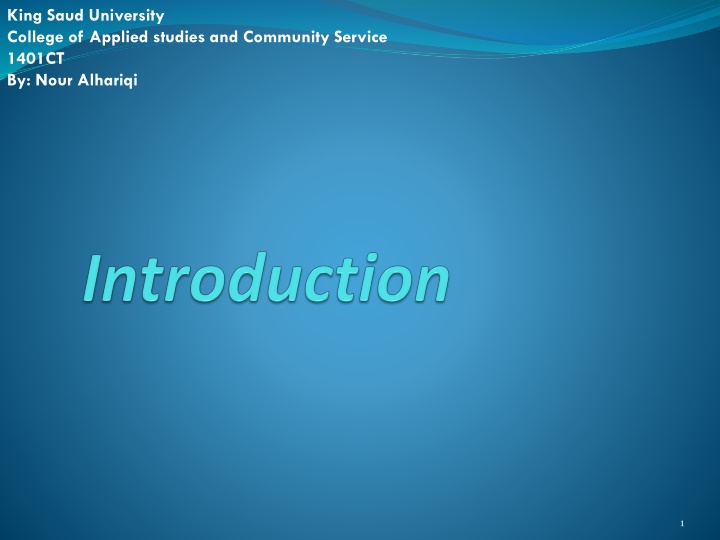
Communication Systems: Understanding Modes and Data Transmission
Explore the world of communication systems, including models, modes of communication, data transmission methods, analog and digital data, and more. Learn about how information is shared over various distances and the effectiveness of communication systems.
Download Presentation

Please find below an Image/Link to download the presentation.
The content on the website is provided AS IS for your information and personal use only. It may not be sold, licensed, or shared on other websites without obtaining consent from the author. If you encounter any issues during the download, it is possible that the publisher has removed the file from their server.
You are allowed to download the files provided on this website for personal or commercial use, subject to the condition that they are used lawfully. All files are the property of their respective owners.
The content on the website is provided AS IS for your information and personal use only. It may not be sold, licensed, or shared on other websites without obtaining consent from the author.
E N D
Presentation Transcript
King Saud University College of Applied studies and Community Service 1401CT By: Nour Alhariqi 1
Outline Communication system Communication system model Mode of Communication Data Transmission Mode Analog and digital communication system Effectiveness of Communications System 2
Communications System Communication is the sharing of information. Local , Over distance. A Communication System is a combination of processes and the hardware used to accomplish the transfer of the Information. 3
Communications System Model Transmitter: process the message signal into a form suitable for transmission over the communication channel. Communication channel: provide a pathway between the transmitter's output and the receiver's input. Receiver: process the received signal to recover the appropriate message signal. 5
Mode of Communication There are two basic mode of communication: 1- Broadcasting single transmitter and numerous receiver. 2- Point to point communication single transmitter and single receiver. Point to point Broadcasting 6
Data Transmission Mode Data transmission between two devices can be: 7
Analog and Digital Data Analog Digital 8
Analog and Digital Data Analog Data data takes on continues values. E.g., human voice, weight, temperature values. Digital Data data takes on discrete values. E.g., text data 9
Analog and Digital Signals There are two methods in transmitting a message signal over the communication channel: analog or digital 10
Analog and Digital Signals Analog signal: is a signal whose amplitude can take on any value in a continues range. Digital signal: is a signal whose amplitude can take on only a finite number of values. 11
Analog Communication System Analog Communication is a communication method of conveying voice, data, image, signal or video information using a continuous signal. Which varies in amplitude, phase, or some other property in proportion to that of a variable. 14
Analog Communication System The transmitter block contains the modulator device. The receiver block contains the demodulator device. The modulator modulates a carrier wave (the electromagnetic wave) which has a frequency that is selected from an appropriate band in the radio spectrum 16
Digital Communication System Digital communication is a mode of communication where the information is encoded digitally as discreet signals and electronically transferred to the recipients. 17
Digital Communication System Source Encoder compresses the data into minimum number of bits. This process helps in effective utilization of the bandwidth. Channel Encoder The channel encoder, does the coding for error correction. Digital Modulator The signal to be transmitted is modulated here by a carrier. 19
Digital Communication System Channel Decoder The channel decoder does some error corrections. Source Decoder The source decoder recreates the source output. 20
Effectiveness of Communications System The effectiveness of a communications system depends on four fundamental characteristics: Delivery Accuracy Timeliness Jitter 22
Effectiveness of a Communications System Delivery: The system must deliver information to the correct receiver. Information must be received by the intended device or user and only by that device or user. Accuracy: The system must deliver the information accurately. Information that have been altered in transmission and left uncorrected are unusable. 23
Effectiveness of a Data Communications System Timeliness: The system must deliver information in a timely manner. Information delivered late are useless. In the case of video and audio, timely delivery means : delivering data in the same order as they are produced, and without significant delay. This kind of delivery is called real-time transmission. 24
Effectiveness of a Data Communications System Jitter: Jitter refers to the variation in the packet arrival time. It is the uneven delay in the delivery of audio or video packets. For example, let us assume that video packets are sent every 3 ms. If some of the packets arrive with 3 ms delay and others with 4 ms delay, an uneven quality in the video is the result. 25
